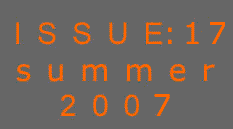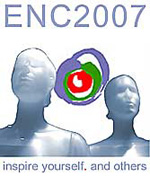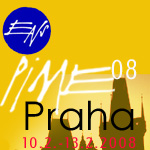
The Assisi Symposium on Nuclear Conversion and
Development
By Enrico Mainardi, Deputy Secretary General of
AIN (the Italian Nuclear Association)
On April 13 and 14 2007, a meeting took place
in Assisi, to promote a programme for the conversion of nuclear
warheads into nuclear fuel for nuclear power plants. According
to the Megatons to Development programme, part of the income raised
from the programme can be used to finance development projects
in the southern hemisphere. The European institutions and the
European nuclear industry can play a leading role in strengthening
the link between nuclear energy and peace and possibly also in
promoting socio-economic development.
The Megatons to Development
project aims to promote the conversion of nuclear warheads into
nuclear fuel and to use part of the income raised to finance development
projects in the southern hemisphere.
The Assisi Symposium on 13 and 14 April (Figure 1) took place
at the Holy Convent of the Franciscan Order. It focused on the
possible leading role that the European Union could play in promoting
this project, which was proposed by the Italian NGO Comitato
per una Civiltà dell’Amore (Committee
for a Civilisation of Love).
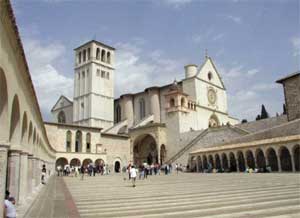
Figure 1: Updating Nuclear Peace and Development
Symposium at the San Francesco Sacred Convent in Assisi, with
the participation of well-known experts in the institutional,
scientific, political and technological aspects of international
diplomacy (April 13 and 14, 2007 and October 15, 2005).
The symposium consisted of a series of presentations,
followed by discussions during round table sessions. During the
part of the meeting devoted more specifically to nuclear issues,
which was chaired by Enrico Mainardi of AIN (the Italian Nuclear
Association), a presentation was given by Bertrand Vieillard Baron
entitled Global Worldwide Perspectives
for Nuclear Power. The international
focus of this presentation was the starting point for an interesting
discussion on nuclear issues related to the main theme of the
meeting.
The Comitato per una Civiltà
dell’Amore held organised other official meetings
in Assisi and Rome to discuss the proposal. The
programme Conversion of Nuclear Weapons into Development Projects
in the Southern Part of the World was first presented
at the Italian Convention in Rome, on 11 November 2004, and subsequently
at the International Convention of Assisi, on October 15, 2005.
The socio-economic and technical aspects of the programme had
been discussed at length with NGOs, scientists and ambassadors,
together with the support of the Holy See. Irrespective of one’s
personal religion convictions it was agreed that the use of nuclear
weapons to indiscriminately destroy entire cities or areas, often
wiping out their populations, should be unreservedly condemned.
Using nuclear weapon materials in nuclear reactors to generate
electricity is without doubt an initiative that promotes peace.
The Megatons to Megawatts programme
Thanks to international agreements reached on
nuclear disarmament, the conversion of uranium from nuclear warheads
into fuel for nuclear power plants is already in progress. The
USA and Russia kicked off the Megatons to Megawatts Programme
in 1992 thanks in part to the research first carried out in Italy
by the late Edoardo Amaldi. Amaldi was an Italian scientist who,
together with Enrico Fermi, contributed greatly to research and
development in the field of nuclear energy.
In June 1992 the International symposium Conversion
of Nuclear Warheads for Peaceful Purposes took
place in Rome (Figure 2). Studies and analyses carried out by
Italian, American, Russian, German, Japanese, French and Belgians
scientists were presented in the presence of the Holy Father,
Pope John Paul II. During the meeting an important speech was
given by V. Mikhailov (the then Minister of Energy of the Russian
Federation). Subsequent contacts were developed with a view to
establishing Russian-American cooperation agreements.
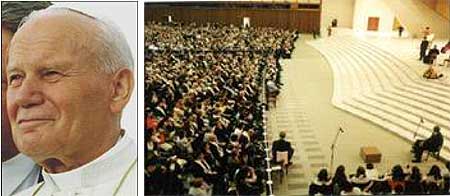
Figure 2: International Symposium on the Conversion
of Nuclear Warheads for Peaceful Purposes, Rome, June 15 -17,
1992, in the presence of the Holy Father, Pope John Paul II.
In the same year, the First International
Symposium of Scientists and executives from the
USA, Russia, Japan and Europe took place (Figure 3).
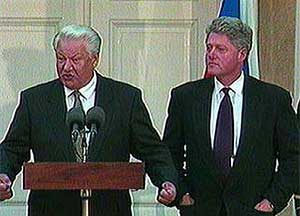
Figure 3: Presidents Yeltsin and Clinton at the
time of the First International Symposium of Scientists and Executives
from USA, Russia, Japan and Europe on the conversion of nuclear
arms into fuel for nuclear power plants, just before the USA-Russia
nuclear conversion programme Megatons to Megawatts was launched,
in 1993.
In 1993, the USA-Russia nuclear conversion programme
Megatons to Megawatts started up with
the main goal of converting 20,000 nuclear warheads into fuel
for nuclear power plants. Up until now, conversion activities
have eliminated the equivalent of 12,000 nuclear warheads by converting
them into nuclear fuel for use at commercial nuclear power plants.
According to the US enrichment company USEC, 300 metric tonnes
of highly-enriched uranium (HEU) from Russian nuclear warheads
have been downgraded to low-enriched uranium (LEU) fuel as part
of the so-called Vital Energy and Non-proliferation
Programme.
US commercial nuclear reactors use this LEU fuel
to generate about 10% of the country’s electricity. The
Megatons to Megawatts programme is now 60% complete. When the
programme is completed in 2013, 500 tonnes of HEU – the
equivalent of 20,000 nuclear warheads – will have been downgraded
to LEU fuel. USEC implements this 20-year commercial agreement
on behalf of the US government, in partnership with the Russian
nuclear fuel cycle company Techsnabexport (Tenex). USEC pays Tenex
for the separated work elements contained in the fuel. Up until
the end of 2006, USEC had paid Russia more than 4.6 billion US
$ (3.4 billion €). With annual purchases of more than 500
million US $, USEC expects to pay Russia more than 7.6 billion
US $ by the end of the contract, in 2013. The LEU fuel obtained
so far from the downgraded HEU can be used to generate enough
electricity to power an average-sized city for more than 460 years,
according to USEC. (www.usec.com/,
www.tenex.ru/english.html)
The Megatons to Development programme
The Megatons to Megawatts
initiative is the main point of reference for this new Megatons
to Development programme. A technico-economic feasibility
study on the conversion of nuclear weapons into development projects
in the southern hemisphere has been proposed. The conversion of
weapons of mass destruction into new economic resources, starting
from nuclear warheads currently being dismantled, would reduce
the risk of apocalyptic disasters and create a new atmosphere
for peace.
The energy obtainable from the uranium from 60,000
warheads (more than 1,000 tons of HEU) is equal to the power consumption
of the world’s total population in one year. According to
the organizers of the Assisi meeting, if all nuclear warheads
were converted into fuel for nuclear power plants it is possible
to benefit from an economic “dividend”. A preliminary
assessment of this dividend has been made and with the appropriate
support and consensus it can be used to boost development in the
southern hemisphere. It is necessary to lobby the governments
of the countries directly involved in the conversion of uranium,
so that the return can promote economic development. It is also
important to promote intergovernmental cooperation. The programme
is very ambitious and must be very well organized. In this way
Europe can contribute to the conversion of nuclear warheads via
disarmament and can help the development of poor countries.
During the meeting in Assisi a kind of support
programme – mainly in the southern hemisphere – has
been proposed. This support is based on development activities
in the form of mini-projects. According to the Comitato per una
Civiltà dell’Amore, these mini-projects can be more
effective than major ones. This has been borne out by mini-projects
successfully carried out by missionaries, NGOs and, recently,
by some international organizations.
The objectives of the programme remain of significant
relevance today – especially considering global changes
that have taken place over the last 15 years. The development
needs of poor countries must, more than ever before, be taken
into consideration, without ignoring that now Russia and China
(and very soon India) are major players on the global energy stage.
One must not forget the political changes that have taken place
in the Middle East during the same 15 years, as they too are relevant
in today’s world political scenario.
Justice, peace and dialogue were the main messages
to emerge from the Assisi Symposium. When it comes to nuclear
issues, justice, peace and dialogue for the entire world is a
must - irrespective of culture or religion. Even if some of these
proposals seem very ambitious, discussions are nevertheless necessary
due to the present world situation. At the moment greater political
and institutional support is needed in order for the Megatons
to Development programme to take off. The European nuclear industry,
NGOs and European Institutions can help promote this process of
conversion and development. And the role of international organizations
must be amplified too.
 Download Programme
Download Programme
|
Enrico MAINARDI has a degree in Nuclear
Engineering from the University of Bologna, a PhD
in Energetics from the University of Rome "La
Sapienza" and he has a teaching contract at the
University of Rome “Tor Vergata”. He also
has research and development experience in several
fields of energy and nuclear science and technology
both in Italy (ENEA - National Agency for the New
Technologies, Energy, and the Environment, APAT -
Agency for
|
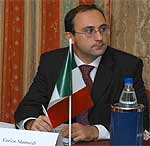 |
Environmental
Protection and Technical Services) and the USA (UCB
- University of California Berkeley, LBNL - Lawrence
Berkeley National Laboratory).
Enrico is Deputy Secretary General
of AIN (Italian Nuclear Association www.assonucleare.it),
Chair of the Italian Young Generation Network and
is involved in the IYNC (International Youth Nuclear
Congress) and the ENS YGN (Young Generation Network)
core group. E-MAIL: info@assonucleare.it
|
|
|

